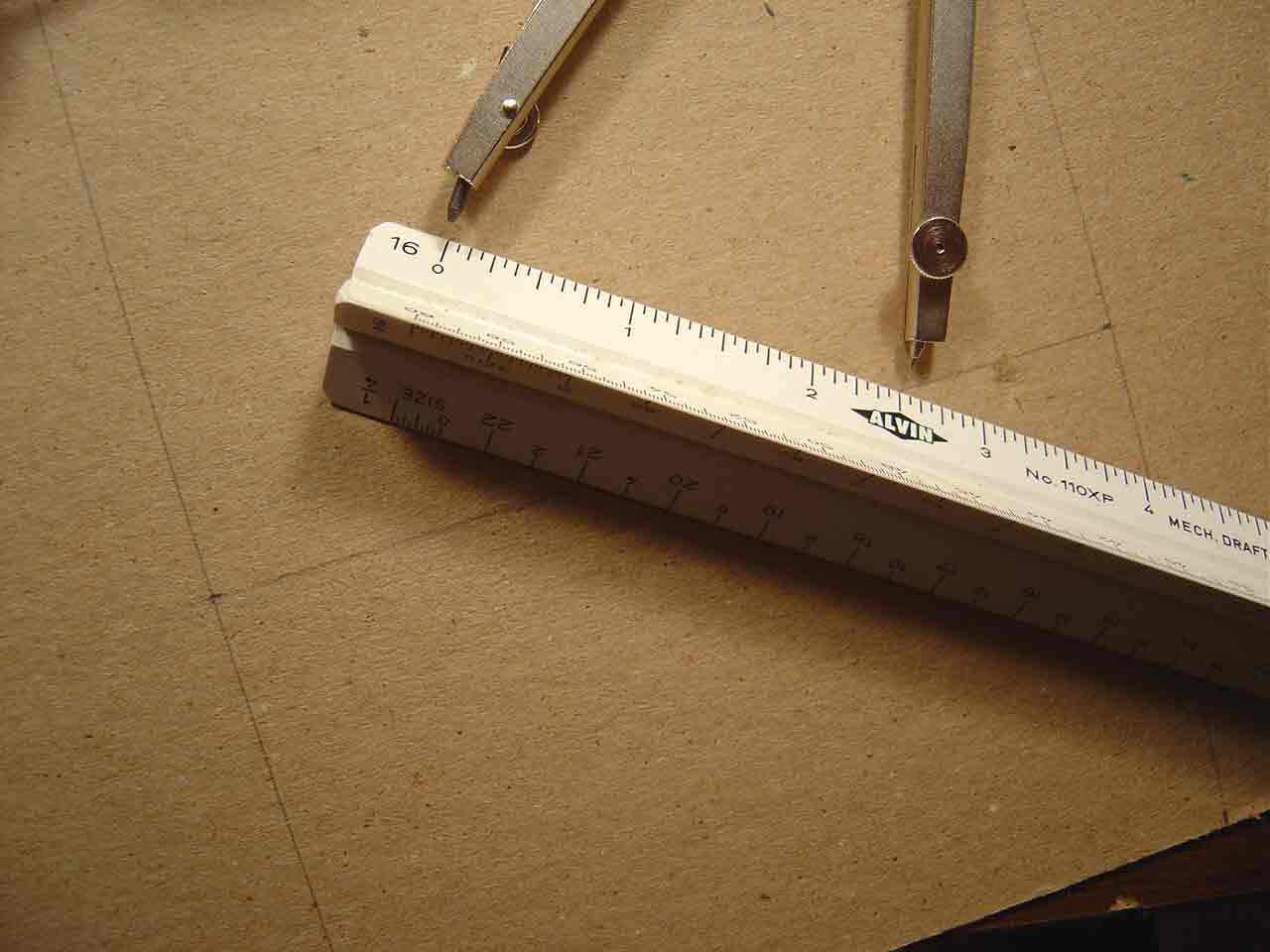 HE Collector and the Photographer have now agreed that a small castle would be a desirable addition to the black setting for small displays. They have also agreed that the small castle should closely resemble the Photographer's conception shown in the sketch in Plate 30.
HE Collector and the Photographer have now agreed that a small castle would be a desirable addition to the black setting for small displays. They have also agreed that the small castle should closely resemble the Photographer's conception shown in the sketch in Plate 30.
The Photographer, accustomed to detailed work, assumed the role of Artisan during this project, while the Collector provided cogent commentary in the indispensable role of Advisory Aesthetician.
--more--

The accompanying photo shows the Artisan's bow compass set to a span of two and one-half inches, according to the divisions on the inch-scale of the triangular architect's ruler. Underneath the ruler is a piece of scrap cardboard from the back of a spent writing pad. This piece of cardboard was trimmed to a length of eleven inches and a width of eight inches. The opening for the entrance arch has already been ruled in pencil upon the cardboard.
Note: The Artisan recommends that scraps of cardboard should be saved in an accessible place for various construction jobs such as this.
"What color will the finished castle be? Gray, like fieldstone? Or, perhaps, light yellow, like stucco?" the Advisory Aesthetician asked.
"Dull black, I should think, so as not to distract from the articles on display," answered the Artisan.
"Perhaps we should call it the Black Castle," mused the Advisory Aesthetician, aloud.
"Good idea," replied the Artisan.
Go to top of page